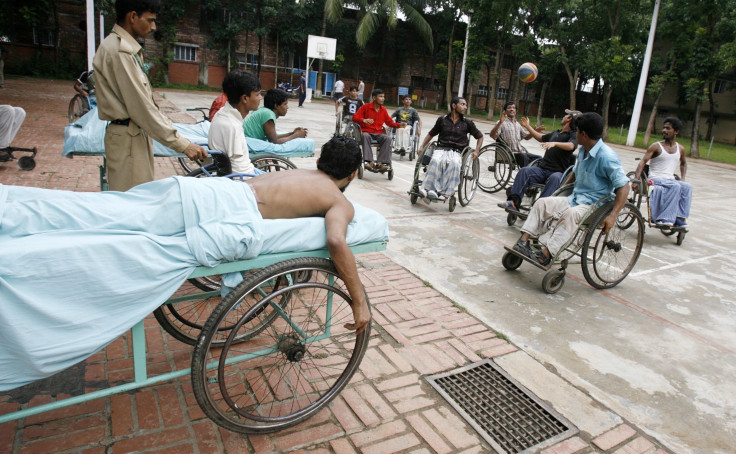New treatment allows completely paralysed men to move without surgery

People with severe paralysis were able to voluntarily move their legs in a walking motion through a new treatment that uses electrical stimulation to the spinal cord without the use of surgery. In the study, the researchers helped five men who had been completely paralysed to move in a rhythmic motion after just an 18-week session.
In the study published on the Journal of Neurotrauma, researchers from University of California, Los Angeles, or UCLA, tried to prove that patients with severe spinal cord injuries may be able to recover multiple body functions. A group of researchers demonstrated a new treatment that could stimulate voluntary stepping movements in paralysed patients that didn’t require a surgical implant.
In the study, V. Reggie Edgerton, senior author of the research, and his team used a technique called transcutaneous spinal cord stimulation. They placed a device on five male patients’ lower back called an epidural stimulator, a non-invasive alternative treatment where researchers were able to send a pattern of electrical currents in the spinal cords through electrodes.
Each of the men were paralysed for more than two years, with injuries from athletic activities or, in one case, an auto accident. To increase movement during the sessions, the researchers gave a pharmacological drug buspirone, a drug often used to treat anxiety disorders, in the final four weeks of treatment. After 18 weeks of 45-minute stimulation sessions once a week, where the electrical charges caused no discomfort to the patients, the paralysed men were able to move their legs without stimulation.
Most experts, including Edgerton, assumed that people who were completely paralysed would no longer have had neural connections across the area of the spinal cord injury. However, the stimulation “reawakened” dormant but considered still functioning neural connections in the body of the patients, which helped achieve the movement, according to a UCLA press release.
“It’s as if we’ve reawakened some networks so that once the individuals learned how to use those networks, they become less dependent and even independent of the stimulation,” Edgerton said.
The current study was built on previous research by Edgerton and colleagues that also used electrical stimulation but requires a surgically implanted device to be activated. However, the new approach, according to Edgerton, could be more accessible to patients as it doesn’t require surgery, and “the other potentially high impact is that this intervention could be close to one-tenth the cost of an implanted stimulator.”
However, the researchers noted that to date, the result is not comparable to walking yet as they want to investigate whether the same patients could be trained to fully support their weight and walk. Edgerton said it likely will be years before the new approaches are widely available, as both surgical and non-surgical methods will be developed to ensure treatment options are as broad as possible to cater to different patients’ needs.
Contact the writer at feedback@ibtimes.com.au or let us know what you think below.




















